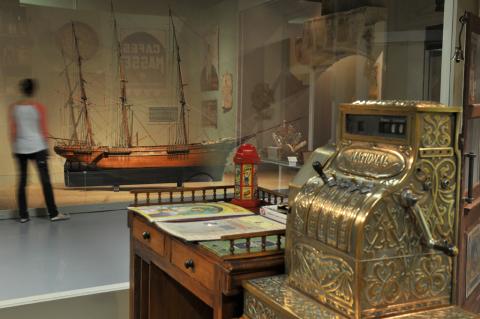The 19th century
With the French Revolution, Bordeaux and its region moved from the Ancien Régime to the great changes of the 19th century.
The exhibition highlights the transport revolution with the use of steam and the propagation of the railways which replaced the traditional water routes and led to the development of seaside resorts such as Arcachon and Biarritz.
The large-scale transformations of Bordeaux and its port, carried out under the leadership of a number of local figures, are also evoked through abundant iconography, sculptures and architectural elements.
The commercial changes undertaken by the town during this period are also emphasised. The cod trade was extremely important during the 19th century with the installation of drying plants at Bègles, and Bordeaux gradually became the national market for this fish. The port enlarged its commercial horizon to Africa, the Far East and Oceania. In around 1850, naval dockyards increased the construction of clippers (many of which were intended for trade with South America). The rum trade developed with the French Antilles and Guyana. Large quantities of imported goods were processed in factories in Bordeaux and its region, then sold (oil mills, chocolate factories, refineries, distilleries etc.) as is shown by a grocer's shop stocked with a great variety of Aquitanian products. But the favoured relationships between Bordeaux and the colonies went beyond the strictly commercial level and were indicated in an emerging taste for oriental products; the reconstructed room belonging to Edouard Bonie, a civil servant in north Africa, perfectly illustrate this taste for the exotic that lasted throughout the whole 19th century.
The great painting on zinc by Robert Cami (around 1937) reminds us that during the first half of the 20th century the port of Bordeaux continued to profit from its overseas relationships and to enhance its economic prosperity with the commodities brought back from the colonies. The model ships and iconography presented also show that for more than a century regular steam packet lines called at Port de la Lune and transported passengers to North America, the Caribbean, Latin America and the west coast of Africa. In particular, Bordeaux became a major passenger port for destinations in South America.

